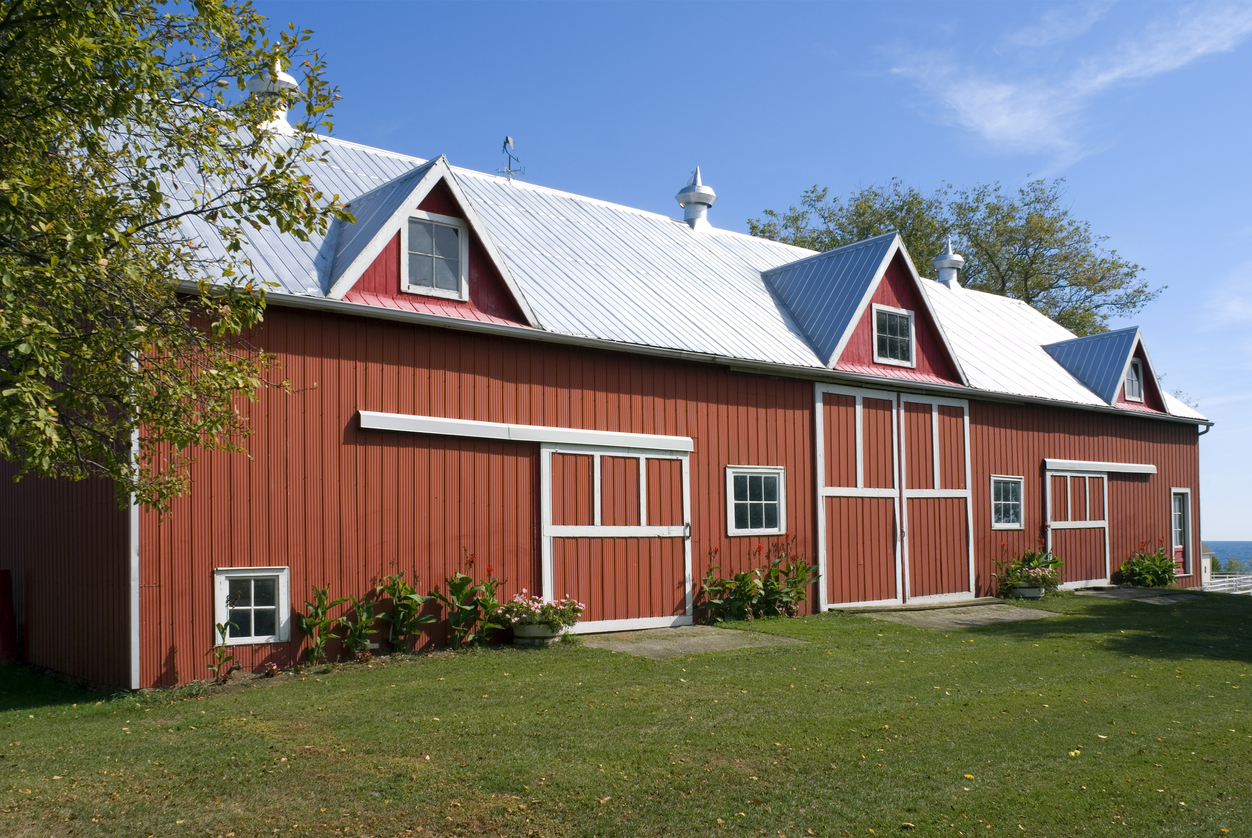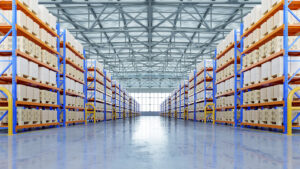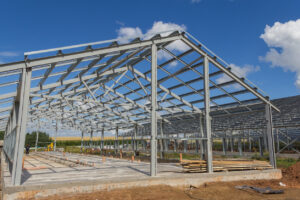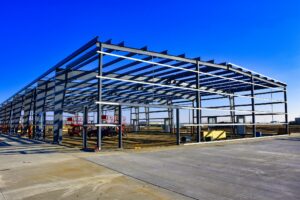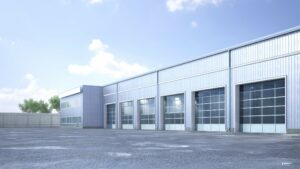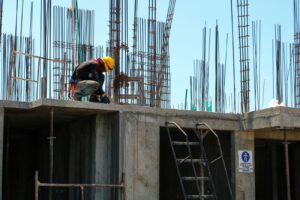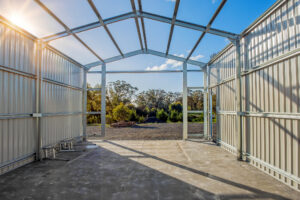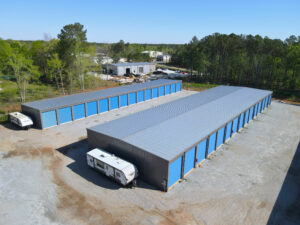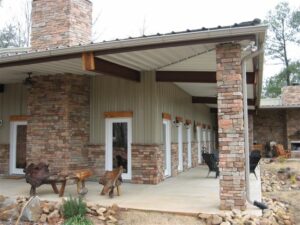Having a dilemma about metal buildings vs wood buildings? You are not alone., They are the two most considered options when it comes to building materials. Metal and Wood buildings have their unique featues ranging from cost, durability, sustainability, traditional charm and versatility.
Wood remains the dominant material for new-home construction in the U.S. Approximately 90% of homes built in 2019 were wood-framed. About 70% of non-residential construction structures are pre-engineered steel buildings.
In this article, we will provide a comparative analysis of metal and wood buildings, discussing their basics, construction process, durability and maintenance, environmental impact, and cost analysis.
Let’s delve into the details and explore the key differences between these two building types.
Table of Contents:
- Understanding the Basics of Metal and Wood Buildings
- The Construction Process Compared
- Durability and Maintenance
- Environmental Impact
- Cost Analysis
- Next Steps
- Frequently Asked Questions
Understanding the Basics of Metal Buildings vs Wood Buildings
Before we compare metal and wood buildings, it is essential to understand what each type entails.
When delving into the world of construction, it’s fascinating to explore the intricate details that differentiate metal and wood buildings.
Each material brings its unique characteristics and benefits to the table, shaping the outcome of the structure in distinct ways.
Defining Metal Buildings
Metal buildings are structures primarily made of steel or metal alloys. They are known for their strength and resistance to various weather conditions. Typically, metal buildings consist of a steel frame with metal panels, offering a lightweight yet sturdy option for construction projects.
The evolution of metal buildings has revolutionized the construction industry, providing architects and builders with a durable and efficient alternative to traditional building materials.The versatility of metal structures allows for vast open spaces and creative designs, catering to a wide range of architectural preferences and functional requirements.
Defining Wood Buildings
Wood buildings, on the other hand, are constructed using timber as the primary material. This type of building has been a traditional choice for construction due to its availability, versatility, and aesthetic appeal. Wood buildings range from small residential structures to larger commercial buildings, offering flexibility in design and construction.
Exploring the realm of wood buildings unveils a rich history of craftsmanship and sustainability.
The warmth and natural beauty of wood create a welcoming atmosphere in any building, blending seamlessly with various architectural styles.
From classic log cabins to modern timber-framed structures, wood buildings continue to stand the test of time, embodying a timeless charm that resonates with both builders and occupants alike.
The Construction Process Compared
When it comes to the construction process, metal and wood buildings have their advantages and considerations.
Choosing between metal and wood buildings involves weighing various factors, including construction time, cost, durability, and design flexibility. Both materials offer unique benefits that cater to different project requirements and aesthetic preferences.
Construction Time for Metal Buildings
Metal buildings are often pre-engineered and fabricated off-site, which significantly reduces the construction time. The steel components are precision-made and easily assembled on-site, minimizing the need for extensive manual labor and shortening the overall project duration.
Furthermore, the speed of construction for metal buildings can be particularly advantageous for projects with tight deadlines or where time is of the essence.
The efficiency of erecting metal structures allows for quicker occupancy or utilization of the building, providing a faster return on investment for owners and developers.
Construction Time for Wood Buildings
Wood buildings require a more traditional construction process that includes on-site cutting, shaping, and assembly of timber.
While the construction time for wood buildings can vary depending on the project size, it generally takes longer compared to metal buildings due to the additional manual labor involved.
However, the slower construction pace of wood buildings can also be seen as a benefit in certain cases. The craftsmanship and attention to detail required in working with wood can result in unique, handcrafted structures that exude warmth and character.
This aspect appeals to those seeking a more artisanal or rustic feel in their buildings, showcasing the beauty of natural materials.
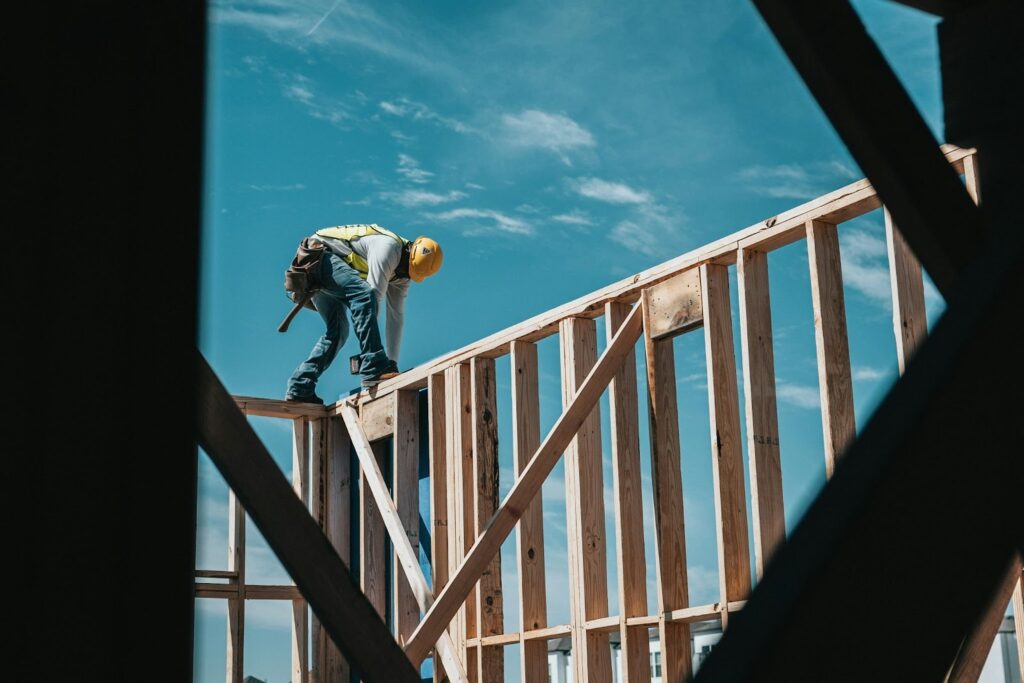
Durability and Maintenance
Durability and maintenance are crucial factors to consider when choosing between metal and wood buildings. However, there is much more to explore when it comes to the durability and maintenance of these two building materials.
Durability of Metal Buildings
Metal buildings are known for their exceptional durability. Steel, the primary material used in metal construction, offers a wide range of benefits. Not only is steel impervious to pests, termites, and rot, but it also provides long-lasting protection against external elements.
This means that metal buildings can withstand harsh weather conditions, including heavy rain, snow, and intense sunlight. Additionally, metal buildings have high structural integrity, making them resistant to natural disasters such as earthquakes and strong winds. The strength and durability of metal buildings make them an excellent choice for industrial, commercial, and agricultural applications.
Durability of Wood Buildings
Wood buildings, while also durable, require regular maintenance to ensure their longevity. Without proper care, wood structures are susceptible to moisture, pests, and decay. However, with proper treatment and maintenance, wood buildings can withstand the test of time and offer a warm and inviting ambiance.
One advantage of wood buildings is their ability to absorb and release moisture, which helps regulate indoor humidity levels. This natural property of wood contributes to a healthier and more comfortable living or working environment. Additionally, wood has excellent insulation properties, providing energy efficiency and reducing heating and cooling costs.
The durability and aesthetic appeal of wood make it a popular choice for residential and commercial buildings.
Maintenance Requirements for Metal Buildings
Metal buildings have relatively low maintenance requirements, making them a practical choice for those seeking hassle-free construction. The metal panels used in construction are typically coated to prevent corrosion and require minimal upkeep.
Regular inspections to check for any signs of wear or damage and addressing them promptly can help maintain the structural integrity of metal buildings. Additionally, cleaning the metal surfaces periodically can help remove dirt, dust, and debris, keeping the building looking fresh and well-maintained.
With proper maintenance, metal buildings can continue to provide reliable and durable structures for many years to come.
Maintenance Requirements for Wood Buildings
Wood buildings require regular maintenance to protect against moisture, insect infestation, and decay. This includes periodic inspections, painting or staining, and ensuring proper ventilation and drainage systems to prevent water-related issues.
Regularly checking for signs of rot or decay and addressing them promptly is crucial in maintaining the structural integrity of wood buildings. Additionally, applying protective coatings or sealants can help prevent moisture penetration and extend the lifespan of the wood. With proper maintenance, wood buildings can retain their beauty and structural integrity for many years, providing a timeless charm and a connection to nature.
As you can see, both metal and wood buildings have their unique characteristics when it comes to durability and maintenance. Understanding these factors will help you make an informed decision based on your needs and preferences. Whether you choose the strength and resilience of metal or the natural beauty and warmth of wood, both options can provide reliable and long-lasting structures for various applications.
Environmental Impact of Metal buildings vs Wood buildings
The environmental impact of construction is a pressing issue that requires careful consideration. It is crucial to analyze the various materials and methods used in building construction to minimize harm to the environment and promote sustainability.
In this discussion, we delve deeper into the differences between metal and wood buildings in terms of their environmental impact and sustainability practices.
Sustainability of Metal Buildings
Metal structures offer a range of sustainable benefits that contribute to a greener construction industry. One key advantage of metal is its high recyclability rate, which significantly reduces the need for new raw materials and minimizes waste. The steel used in metal buildings can be recycled multiple times without compromising its strength or quality, making it a valuable resource in sustainable construction practices.
Moreover, metal buildings can be designed to incorporate various energy-efficient features, such as advanced insulation systems, solar panels for renewable energy generation, and rainwater harvesting systems to promote water conservation. These eco-friendly elements not only reduce the environmental impact of metal buildings but also enhance their overall sustainability.
Did You Know?
Steel being 100% recyclable makes it eco-friendly. Recycled Steel leaves no waste product and retains its original properties.70% of the steel produced in the United States is recycled.
Sustainability of Wood Buildings
Wood has long been recognized as a renewable and environmentally friendly building material, offering unique advantages in sustainable construction.
The use of wood in building construction promotes responsible forest management practices, ensuring the replenishment of timber resources for future generations. Wood buildings also have a smaller carbon footprint compared to metal structures, as the production of metal involves more energy-intensive processes that contribute to greenhouse gas emissions.
By opting for wood buildings, construction projects can reduce their environmental impact and support the preservation of natural resources. Additionally, the aesthetic appeal and warmth of the wood create a welcoming and sustainable living or working environment for occupants.
Cost Analysis of Metal buildings vs Wood buildings
Cost is a significant factor to consider when deciding between metal and wood buildings. Let’s explore the cost implications of each.
When evaluating the cost of metal versus wood buildings, it’s essential to delve deeper into the long-term implications and nuances that can impact your budget and investment decisions.
Initial Costs of Metal Buildings
Metal buildings often have lower initial costs compared to wood buildings. The pre-engineered components and simplified construction process contribute to reduced labor and material expenses. Additionally, metal buildings have a longer lifespan, resulting in potential cost savings over time.
Moreover, the versatility of metal structures allows for quicker construction timelines, which can lead to savings in terms of labor costs and project management. The durability of metal also provides insurance against potential damage from pests or rot, further adding to the cost-effectiveness of these structures.
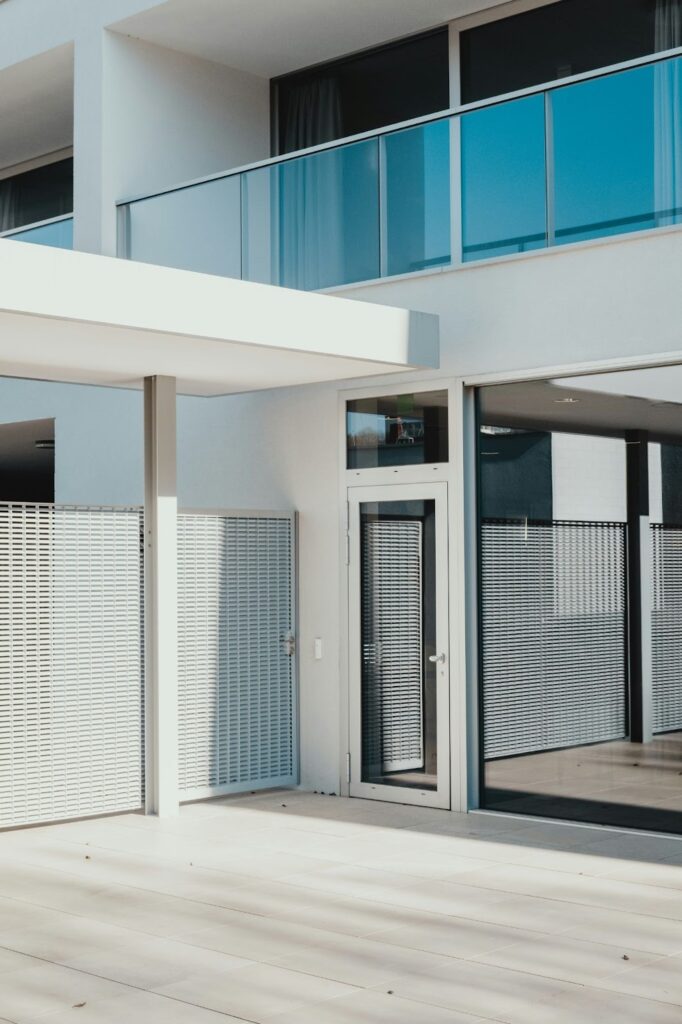
Initial Costs of Wood Buildings
Wood buildings generally have higher initial costs due to the labor-intensive nature of their construction process. The costs of sourcing, cutting, and assembling timber can be higher than the prefabricated components used in metal buildings.
However, it’s important to note that the overall cost can vary depending on the project size, location, and design complexity.
Additionally, the aesthetic appeal of wood buildings is a factor to consider when evaluating initial costs. The natural warmth and beauty of wood can add value to a property, potentially offsetting the higher upfront expenses through increased property value and market desirability.
Pro-tip:
When considering metal buildings vs wood buildings, the initial price of wood may seem appealing. Repairs and replacements for wood (which naturally deteriorates) can be expensive. In contrast, steel structures maintain their value and require minimal upkeep. Land with metal buildings tends to appreciate, making it a sound investment.
Long-Term Costs and Value
When considering long-term costs, both metal and wood buildings have different considerations. Metal buildings require less maintenance and are more resistant to natural elements, potentially reducing repair and upkeep expenses over time. Wood buildings, while requiring more maintenance, can retain their value and charm if properly cared for.
Furthermore, the eco-friendly nature of wood as a building material can be an important factor to consider in the long run. Sustainable forestry practices and the carbon sequestration properties of wood can contribute to a positive environmental impact, aligning with green building initiatives and potentially offering cost benefits in terms of regulatory compliance and public perception.
Next Steps
After analyzing the various aspects of metal and wood buildings, it is clear that both options have their unique advantages and considerations. Metal buildings offer durability, quick construction time, low maintenance, and sustainability, while wood buildings provide versatility, aesthetic appeal, and environmental friendliness.
Deciding between the two depends on factors such as project requirements, budget, maintenance capabilities, and personal preferences. Ultimately, it’s essential to weigh these factors and make an informed choice based on specific needs. Whether it’s a metal building or a wood building, careful consideration and planning will ensure a successful construction project.
SteelCo has 23+ years experience dropshipping customizable steel building materials nationwide from self-storage facilities, warehouses, commercial, industrial buildings and more. As a locally awarded General Contractor, our expertise also extends to comprehensive commercial design-build and construction projects across Georgia. Learn more about our services.
—————————
Frequently Asked Questions
What’s the average cost of metal buildings vs wood buildings?
Wood Buildings typically cost between $5-$10 (lower quality pole barn type of wood) and $20 to $35 (higher quality hardwoods) per square foot for just materials that depends on wood type and quality. On the other hand, metal buildings tend to be slightly more affordable on average, often starting off with a range of $17-$20 per square foot. Wood construction costs tend to be more expensive due to requiring highly skilled laborers for construction and longer construction times compared to metal buildings.
Which type of building is better for environmentally conscious individuals?
Both metal and wood buildings have their advantages in terms of environmental impact. Metal buildings offer a high recyclability rate, while wood buildings promote sustainable forest management practices and have a smaller carbon footprint. The choice depends on the specific priorities and values of the individual.
How long does it take to construct a metal building compared to a wood building?
Metal buildings typically have a faster construction time due to the use of pre-engineered components and less manual labor. Wood buildings, on the other hand, require more on-site work and customization, resulting in a generally longer construction period.
Which type of building requires less maintenance over time?
Metal buildings have relatively low maintenance requirements, as the metal panels are coated to prevent corrosion. Wood buildings require regular maintenance to protect against moisture, pests, and decay, such as periodic inspections, painting or staining, and ensuring proper ventilation.
Can metal buildings withstand extreme weather conditions?
Yes, metal buildings are known for their durability and can withstand various weather conditions, including heavy rain, snow, intense sunlight, earthquakes, and strong winds. Steel is resistant to pests, termites, and rot, making metal buildings suitable for challenging environments.
Which type of building provides better insulation and energy efficiency?
Both metal and wood buildings can be designed and constructed to achieve high levels of insulation and energy efficiency. Advanced insulation systems, solar panels, and other energy-efficient features can be incorporated into both types of buildings to reduce energy consumption and create a more comfortable indoor environment.
Can metal buildings be customized to meet specific design preferences?
Yes, metal buildings offer great design flexibility. They can be customized in terms of size, shape, color, and various architectural features to meet specific design requirements. Metal buildings can be tailored to suit diverse aesthetic preferences and functional needs.
——————-
Check out these related articles:
> Pole Barn Vs Metal Building: A Comparative Guide









